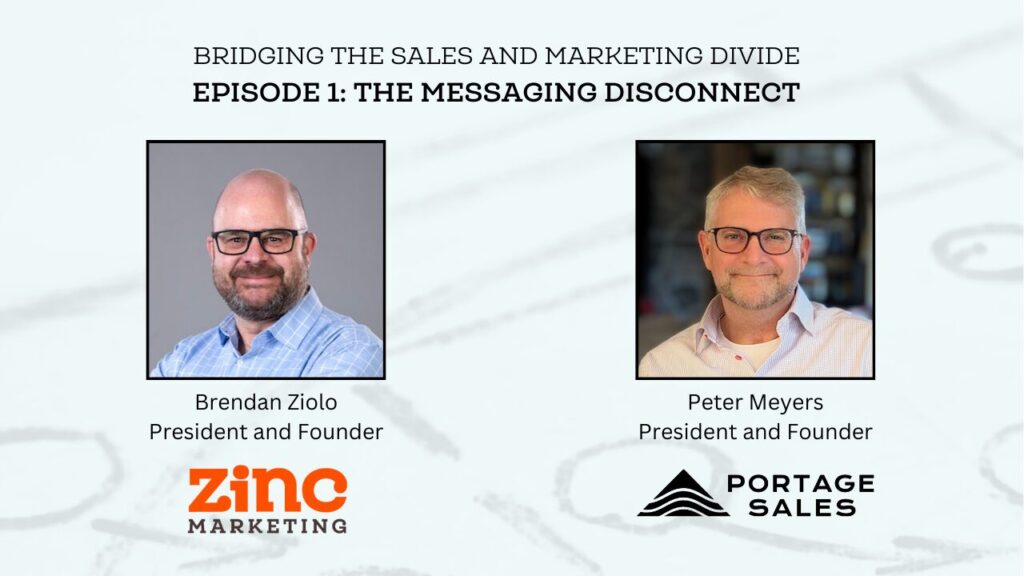Summary
Sales and marketing teams often live in different worlds, leading to misaligned messaging that confuses prospects and hampers growth. While marketing focuses on creating clear, differentiated messages, sales prioritizes real-time customer interactions and feedback.
This disconnect results in lost opportunities, wasted resources, and frustration. In this episode, Brendan Ziolo from Zinc Marketing and I dive into the root causes of this issue and explore practical strategies to bridge the messaging divide between sales and marketing.
Aligning sales and marketing teams can lead to a 38% higher sales win rate and a 24% faster revenue growth!
Webinar:
We recently conducted a poll to understand the biggest challenges you face in aligning your sales and marketing teams. The results were clear: mismatched messaging between sales and marketing was identified as one of the top two critical gaps.
As sales and marketing leaders, our job is to make our offerings compelling and easy to buy, focusing on solving deep problems for our customers. When we have mismatched messaging, the impact can be significant:
- Confused Prospects: Potential customers receive mixed signals, leading to confusion and hesitation.
- Lost Opportunities: Inconsistent messaging can result in lost sales opportunities as prospects struggle to understand the value proposition.
- Wasted Resources: Marketing efforts may be wasted if sales teams aren’t equipped or motivated to use the provided materials effectively.
- Lower Close Rates: Disjointed messaging can lead to lower close rates as prospects don’t see a unified, compelling case for the product or service.
Why Does This Messaging Gap Exist?
In many ways, sales and marketing live in two different worlds. They report to different leaders, have different reward mechanisms, and experience vastly different day-to-day activities. No wonder there’s often a divide between these teams.
- Marketing’s Echo Chamber: Marketing teams invest significant time in crafting product positioning and value propositions. Yet, without sales or customer input, these efforts often miss the mark with customer conversations.
- Sales Often Fail to Collaborate: Salespeople constantly engage with customers, and they have invaluable feedback that can refine marketing strategies, but this feedback loop is frequently underutilized.
Bridging the Divide: Practical Strategies
- Leadership-Driven Collaboration: Leaders must motivate front-line sales and marketing staff to work together and support them in taking the time to get messaging right. It is crucial to ensure both teams are aligned from the top down.
- Face-to-face interactions: Promote regular, informal interactions between sales and marketing teams. Simple actions like joint lunches or trade show attendance can foster mutual understanding.
- Joint Pitch Practice and Training: Conduct joint practice sessions where marketing presents their pitches to sales and vice versa. This builds confidence and ensures consistency in messaging.
What’s your experience with sales and marketing alignment on messaging to customers? Have you faced similar challenges or found effective solutions? Share your thoughts in the comments below!

